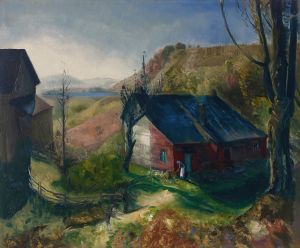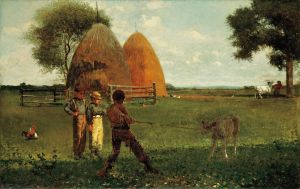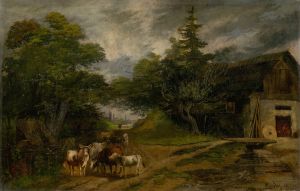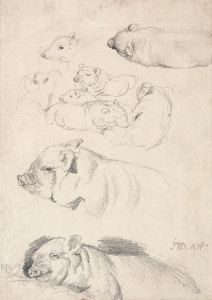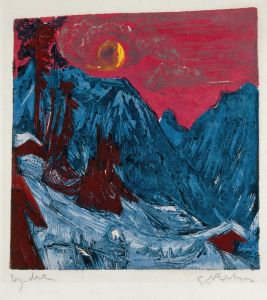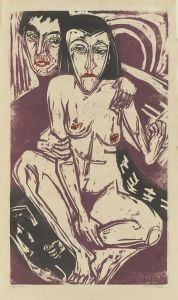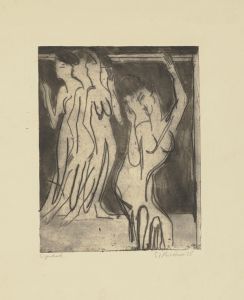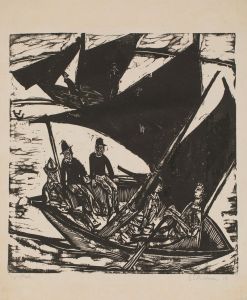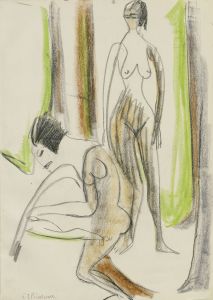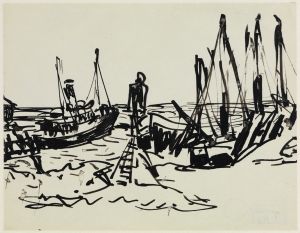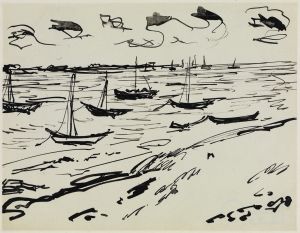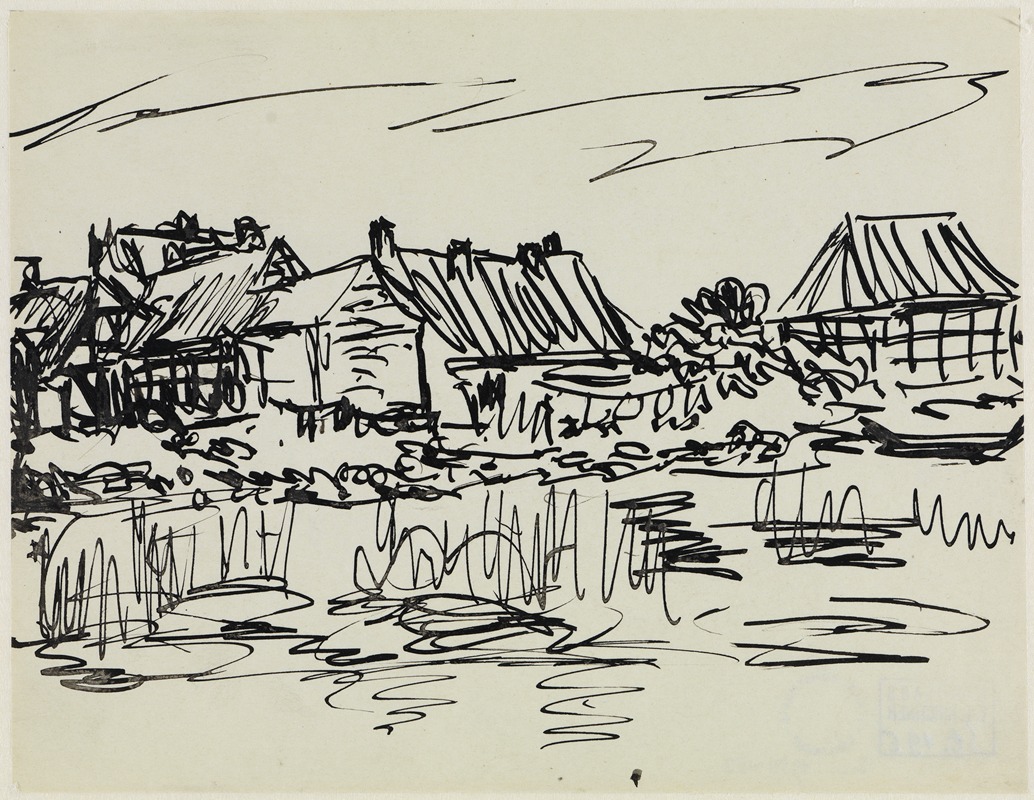
Bauernhäuser am Wasser
A hand-painted replica of Ernst Ludwig Kirchner’s masterpiece Bauernhäuser am Wasser, meticulously crafted by professional artists to capture the true essence of the original. Each piece is created with museum-quality canvas and rare mineral pigments, carefully painted by experienced artists with delicate brushstrokes and rich, layered colors to perfectly recreate the texture of the original artwork. Unlike machine-printed reproductions, this hand-painted version brings the painting to life, infused with the artist’s emotions and skill in every stroke. Whether for personal collection or home decoration, it instantly elevates the artistic atmosphere of any space.
Ernst Ludwig Kirchner's painting Bauernhäuser am Wasser (translated as Farmhouses by the Water) is a work by the German Expressionist artist, who was a founding member of the influential art group Die Brücke (The Bridge). Kirchner, known for his bold use of color and dynamic compositions, created this piece as part of his exploration of rural landscapes, a recurring theme in his oeuvre.
The painting depicts a serene rural scene featuring farmhouses situated near a body of water, rendered in Kirchner's characteristic Expressionist style. His use of vibrant, non-naturalistic colors and exaggerated forms reflects the emotional intensity and subjective perspective that define Expressionism. The work captures the harmony between human habitation and nature, a theme that Kirchner often explored, particularly during his time in the countryside.
Kirchner's interest in rural settings grew during his stays in various regions of Germany and Switzerland, where he sought inspiration from the natural environment. His move to Davos, Switzerland, in 1917 marked a significant shift in his artistic focus, as he increasingly depicted alpine landscapes and rural life. While it is unclear exactly when Bauernhäuser am Wasser was painted, it aligns with his broader interest in capturing the simplicity and tranquility of rural scenes.
As with many of Kirchner's works, this painting demonstrates his innovative approach to form and color, which was influenced by movements such as Fauvism and Post-Impressionism, as well as by non-European art forms. His style aimed to evoke emotional responses rather than adhere to realistic representation, making his works distinctive within the Expressionist movement.
Kirchner's career was deeply affected by the political and social upheavals of his time. His art was labeled "degenerate" by the Nazi regime, and many of his works were confiscated from German museums during the 1930s. Despite these challenges, Kirchner's contributions to modern art have been widely recognized, and his works are now celebrated in major museums and collections worldwide.
Specific details about the provenance or current location of Bauernhäuser am Wasser are not readily available, but it remains an example of Kirchner's ability to convey the emotional resonance of the landscapes he depicted. His legacy as a pioneer of German Expressionism continues to influence artists and captivate audiences today.





